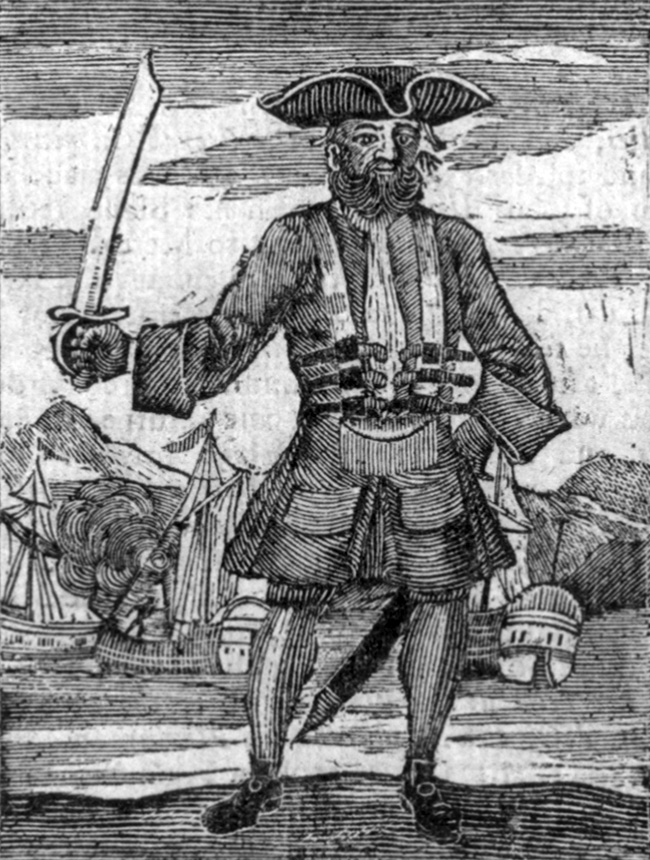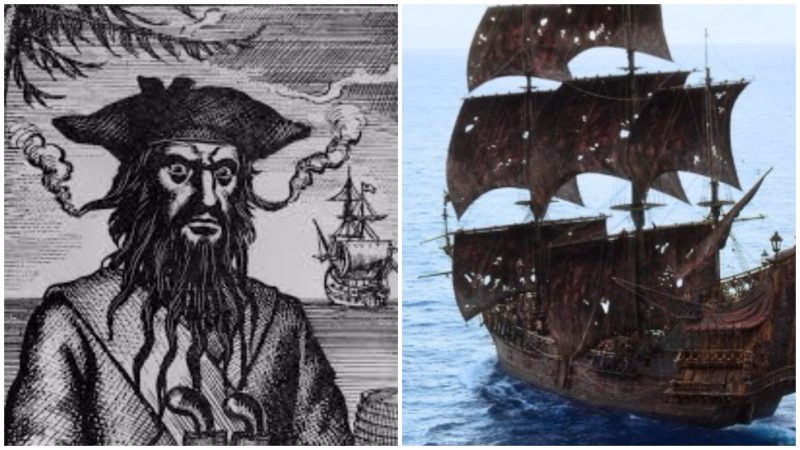In 2011, archaeologists believed they found an important piece of history. A partly-gilded hilt was found in a wreck off the North Carolina coast, and there was a sword inside the wreckage as well. They believe this sword could have belonged to one of the most infamous pirates – Blackbeard.
The sword was found in the wreckage of the Queen Anne’s Revenge, which was the the 18th century pirate’s flagship. The ship had been excavated for nearly 14 years before the finding of the sword. When it was first found, the hilt and the blade were broken apart. Archaeologists have since worked to put it back together and it is now whole again.
Historians believe that the ship was abandoned in the place it was found. The ship most likely hit a sandbar in 1718 near Beaufort, North Carolina and was then abandoned. They also believe that the ship remained intact for a whole year before collapsing and disintegrating. David Moore, who is part of the North Carolina Department of Cultural Resources, said that the pirates would have had a lot of valuables to gather up before leaving the ship behind.
Wendy Welsh, who is a conservator, said that there could be many reasons as to why the hilt was left behind. She believes that it could have been unwanted or was just inaccessible.
Blackbeard, whose real name was Edward Teach, and his crew only lasted two years as high-seas thieves, but during those short years, they caused terror throughout the oceans. They worked the Atlantic Ocean and the Caribbean Sea from the years 1716 to 1718. They mainly ambushed sailors and ships at dawn, when the pirate ship was hard to see. Blackbeard also worked off of the West Indies and the coast of colonial America. Once he even managed to hold off the entire city of Charleston, South Carolina as a hostage.
Blackbeard’s crew had special tactics. When they first spotted a ship, they would find out the nationality of the ship. Then Blackbeard, had the crew raise the same flag as the other ship to make it look like they were from the same country. When Blackbeard’s crew came close enough to the other ship, they switched flags and put up their own, too late for the other ship to escape the terror that was about to be brought down upon them.

After Blackbeard gained fame around the seas, many crews gave up without a fight, knowing just how vicious he and his crew could be. If some ship’s crew decided to fight, that is when Blackbeard’s crew would move in. The men had a routine for taking over a ship – they’d first start with dispatching the sailor who was at the helm of the ship, allowing the ship to drift and making it easier for Blackbeard’s men to hop aboard. They then took the other crew members hostage and ransacked the whole place of gold, coins, jewelry, and anything valuable. They then left and continued on to do that with other ships they met.
Historians believe that Blackbeard was born in England around 1690. He served as a British privateer based in Jamaica. Privateers were private sailors and armed ships that were hired by governments during times of war. The job of a privateer would be to attack the enemy ships.
Queen Anne of Britain had actually allowed Blackbeard to plunder French and Spanish ships during the War of the Spanish Succession, and she let him keep the stolen goods. Blackbeard had a taste for rebellious crime. After the war ended, he joined a group of Caribbean pirates.
Having previous experience as a privateer, Blackbeard became a captain of his own ship; one that he had stolen. He added cannons and reinforced the entire ship to fit his needs. It was large enough to carry about 250 men as well.
Many of the ships that he and his crew ransacked did not have treasure; most had cargo such as grain, molasses, and rum. If there wasn’t any treasure, pirates would steal all the cargo and divide it up so each person got some. Most of the time, the captain and officers got the major portions of the cargo.
Once his reputation grew, Blackbeard felt the need to live up to expectations of being menacing. He grew his hair and beard, braiding the beard and tying his hair back in ribbons. One story tells how a crew member on a ship would not give up his ring to Blackbeard, so he cut off the man’s finger with the ring still attached. He was menacing and wanted people to fear him.
After taking a group of people hostage in North Carolina, he made a home there for a while. He chose a British colony called the Outer Banks. From there, he targeted the ships that were traveling to the American coast. Many people tolerated his presence in North Carolina due to the fact that he sold a lot of the loot he stole. People wanted the sugar and cloth he stole, mainly because pirated goods were cheaper than the English imported goods.
After one rather rambunctious party, a man named Alexander Spotswood, who happened to be Virginia’s governor at the time, sent out Naval troops to finally defeat Blackbeard and his crew. Spotswood hired Lieutenant Robert Maynard and two ships to take on the pirate. The trick was that the small ships that Maynard was in charge of could easily make it over the sandbars that Blackbeard’s ship was docked on.
After hours of battling, Maynard’s crew was able to take down Blackbeard’s crew once and for all. As a warning to all other pirates who followed in Blackbeard’s footsteps, Maynard cut off Blackbeard’s head and suspended it from Maynard’s ship. To this day, many people believe that Blackbeard had buried treasure hidden somewhere. Some are still looking for it, not sure if it’s a legend or if it’s actually true.
